The Puck series of low-profile combination antennas by Poynting offer MIMO cellular and dual-band WiFi support as well as GPS/GLONASS coverage in a small form-factor. This style of antenna is a dome antenna with the cables routed through the base of the antenna. More information on installing these antennas can be found in the Antenna Installation - Low Profile Roof Mounts.
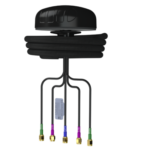
The series comes in several variants but the Puck 5 (5-in-1) appears to be the only model easily available in North America.
All options come in the same low-profile housing designed for transportation and IoT. The antenna comes with a wide variety of mounting options:
- Spigot Mount
- Vertical Pole mount
- Horizontal Pole Mount
- Magnetic Mount
- Surface Mount (Double Sided Tape)
- Wall Mount
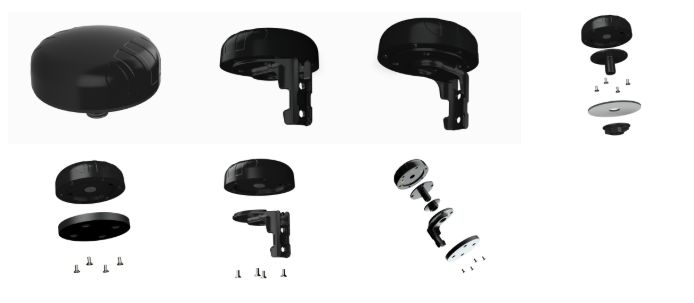
Poynting is a South African-based manufacturer of antennas for wireless high-speed data applications for a variety of uses. They offer a diverse product lineup focusing on residential 4G LTE, GSM, IoT (Internet of Things) and M2M (Machine to Machine) use cases. Some of the antennas can be used for mobile applications.
Specifications
- Model: Puck 1, 2, 3, 4, 5, 7, 8, 12
- Form Factor: Dome
- Direction: Omnidirectional
- # of Antenna Elements: 2x2 Cellular, 1 or 2x WiFi, 1x GPS
- Frequency Range: 617- 4200MHz
- Impedance: 50 Ohms
- Cable Type & Length:
- Cellular: RTK-031, 2m (~6ft)
- WiFi: RTK-031, 2m (~6ft)
- GPS: RTK-031, 2m (~6ft)
- Cable Extender Available
- Connector: SMA Male (all connectors), includes RP-SMA adaptors
- Dimensions (H x L x W): 1.4 x 4 (diameter) inches
- Weight: .98 lbs
- Mounting Options: Spigot, Vertical Pole, Horizontal Pole, Magnetic, Surface (Double Sided Tape), Wall
- Outdoor Rated: Yes, IP-69K
- Frequency Range/Gain:
- LTE: 690 - 960MHz: -1dBi, 1710 - 2170MHz & 3200-3800MHz: 6dBi
- W-iFi: 2.4 - 2.5 & 50 - 6.0GHz, 7.5 dBi
- GPS: 1575.42MHz/1600MHz, 21 +/- 2dBi
- Special Features/Notes: Not Specified
- Retail Price: $78 - $140
News, Videos, & Status
We are not currently testing this antenna.
Alternatives to Consider
For other popular cellular antennas on the market we are tracking - here are our featured options:
This Review Contains Additional Member Exclusive Content!
We are Honored to be Member Funded! No ads, no sponsors, no selling (but may contain affiliate links)
Our members fund our in-depth independent reviews.
This entry may contain additional member exclusive content such as testing notes, field testing data, user interface tours, comparisons to alternatives, analysis, tips, videos and discounts.
Members also get interactive guidance, alerts, classroom and more.
Other Ways to Support Our Work At MIRC
Member Exclusive Content Below
- Thoughts & Analysis - Favorite Features & Potential Downsides
Purchasing Options
Purchasing Links & Disclaimer
We don't sell stuff, we are primarily member funded. Some links below may be affiliate links (see our disclaimer), which also helps fund MIRC.
The vendors displayed below provide larger discounts to our MIAs that we have negotiated instead of displaying affiliate links while they are logged in.
MIA Discounts - Learn & Save!
Our Mobile Internet Aficionados (MIA) get special discounts from the below vendors. Members please check for discount codes before ordering. With savings up to 11% off, you could save more than your membership cost!
Affiliate vendor links - using these links helps support MIRC's mission (MIAs, please log in to get special discounts):
Other vendors (non-affiliate):
Cellular antennas can be a vital part of your signal enhancing strategy to get a better signal, and thus better cellular data performance. They come in many shapes, sizes and varieties.
They can be used directly connected to your mobile hotspots or cellular embedded routers, or they might connect to your cellular booster. They come in omni-directional vs directional, single vs MIMO, and might support different frequency bands. They come in combination antennas with Wi-Fi and GPS.
But most importantly, is your installation options on your RV or boat.
So before choosing an antenna, be sure to understand all of these variables - and keep in mind that there likely isn't a single 'one size fits all' solution here. You may need to make compromises, or even have speciality antennas for challenging signal areas.
We recommend starting with our Guide to Selecting Antennas, and then moving on to our other guides addressing related topics:
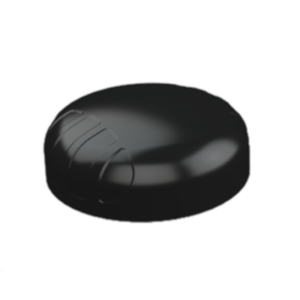
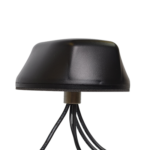
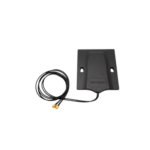
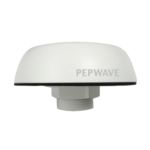
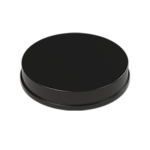

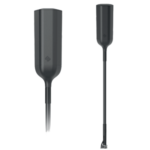
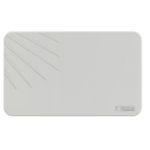
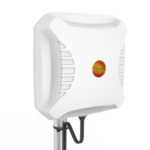
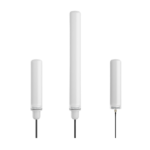
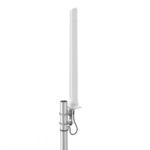

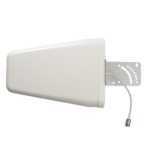










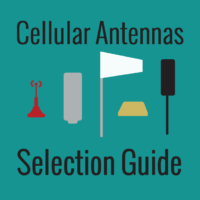
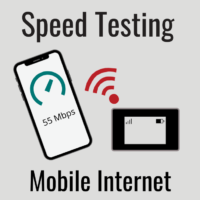
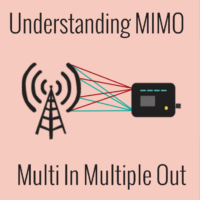
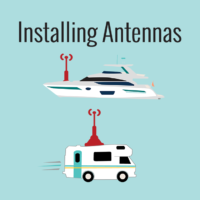

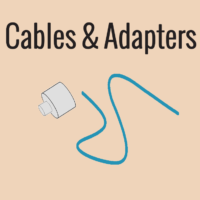
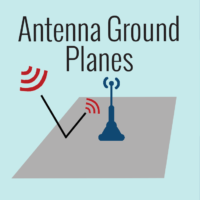






 Mobile Internet Resource Center (dba Two Steps Beyond LLC) is founded by Chris & Cherie of
Mobile Internet Resource Center (dba Two Steps Beyond LLC) is founded by Chris & Cherie of